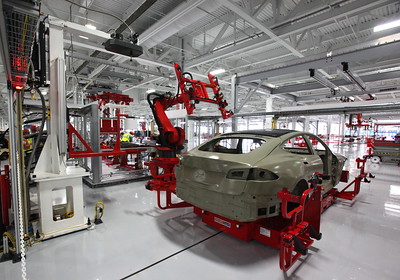Elevating the Importance of Manufacturing and Construction
 Restaurants aren’t open as much as they used to be because they cannot hire enough people to do the work. Simply put, there are too few people who want to take the orders; cook the food; deliver food to the tables; clear the tables; and wash the dishes. Sure, it’s an inconvenience that we can’t get a table, but because there are other ways to get food no one will starve because restaurants open. And while some restaurants will go out of business, this situation doesn’t fundamentally constrain the economy.
Restaurants aren’t open as much as they used to be because they cannot hire enough people to do the work. Simply put, there are too few people who want to take the orders; cook the food; deliver food to the tables; clear the tables; and wash the dishes. Sure, it’s an inconvenience that we can’t get a table, but because there are other ways to get food no one will starve because restaurants open. And while some restaurants will go out of business, this situation doesn’t fundamentally constrain the economy.
And the situation is similar with manufacturing and construction: no one wants those jobs either. But, that’s where the similarities end. The shortfall of people who want to work in manufacturing and construction will constrain the economy and prevent the renewal of our infrastructure. Gone are the days of relying on other countries to make all your products because we now know it’s not the most cost-effective way to go. But if there is no one willing to make the products, there will be no products made. And if there is no one willing to build the roads and bridges, roads and bridges will suffer. And if there are no products, no good roads, and no safe bridges, there can be no strong economy.
While there is disagreement around why people don’t want to work in manufacturing and construction, I will propose three for your consideration.
Firstly, the manufacturing and construction sectors have an image problem. People don’t see these jobs as high-tech, high-status jobs where the working environment is clean and safe. In short, people don’t see these jobs as jobs they can be proud and they don’t think others will think highly of them if they say they work in manufacturing or construction. And because of the history of layoffs, people don’t see these jobs as secure and predictable and don’t see them as reliable sources of income. This may not be the case for all people, but I think it applies to a lot of people.
Secondly, the manufacturing and construction sectors don’t pay enough. People don’t see these jobs as viable mechanisms to provide a solid standard of living for themselves and their families. This is a generalization, but I think it holds true.
Thirdly, the manufacturing and construction sectors require specialized knowledge, skills, and abilities skills that are not taught in traditional high schools or colleges. And without these qualifications, people are reluctant to apply. And if they do apply and a company hires them even though they don’t have the knowledge, skills, and abilities, companies must invest in training which creates a significant cost hurdle.
So, what are we to do?
To improve their image, the manufacturing and construction trade organizations and professional societies can come together and create a coordinated education program to change what people think about their industries. And states can help by educating their citizens on the importance of manufacturing and construction to the health of the states’ economies. This will be a long road, but I think it’s time to start.
To attract new talent, the manufacturing and construction sectors must pay a higher wage. In the short term, profits may be reduced, but imagine how much profits will be reduced if there are no people to build the products or fix the bridges. And over the long term, with improved business processes and working methods, profits will grow.
To train people to work in manufacturing and construction, we can reinstitute the Training Within Industry program of the 1940s. The Manufacturing Extension Partnership programs within the states can be a center of mass for this work along with the Construction Industry Institute and other construction trade organizations.
It’s time to join forces to make this happen.
 Mike Shipulski
Mike Shipulski